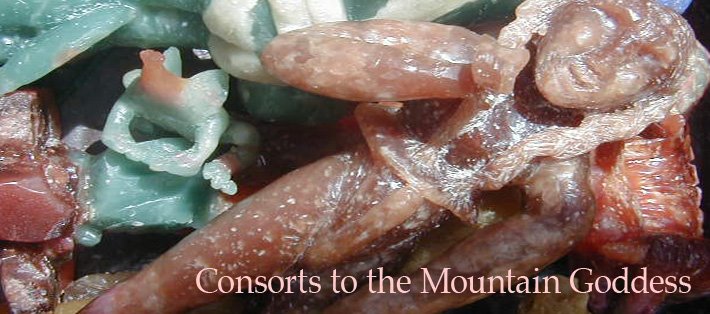In fact, her most satisfactory, and most satisfying, position is being held in the palm of the hand. When seen under these conditions, she is utterly transformed as a piece of sculpture. As fingers are imagined gripping her rounded adipose masses, she becomes a remarkably sensuous object, her flesh seemingly soft and yielding to the touch.
What her identity and purpose may have been, why and for what reason she was carved, becomes an even more pressing question. If we dismiss all associations with goddesses and fertility figures, and assume an objective response to what we see, she might be identified as simply a Stone-Age doll for a child.
The writer goes on to knock this idea back, but the handling of the artefact I can relate to. In particular as I made such artefacts, the feel of it, the heft of it, as I worked in wax were, and are, very important.
Dolls are meant to be held in the hand (as one does in play).
That's how dolls differ from statues, or statuetttes. Statues are meant to be put somewhere, displayed, honoured by some position in some cared for place, or co-ordinated into a sacred place: a niche in a grotto, an altar in a temple, or a cabinet in a shop. They are about being seen, whatever the end point is for such orchestrated observances, in consumption or towards salvation.
I'll be no doubt making statues as the months go by, but, it seems, I started in wanting to make dolls. Metal figurines to be held in the hand for a reason which remains unknown to me, except when I hold them.
The key word in the text quoted above is satisfying.
The consorts must be satisfying when in hand. Even if they end up as statues.
When in the hand, they can be satisfying through their substantial weight of metal, nearly 2 kilograms. They can be satisfying because of their curves, their waists, their buttocks on the palm of the hand.
This is also why such small metal figurines have no bases, they ruin the balance of the doll, (though the bases are good for setting up on a bench top or recess).
I am going to have to find a hand model.

Etruscan Male Statuette 5th BC - Herakles (?), H.12.1 cm. W. 3.4 cm. (at shoulders) Bronze. Broken element on left arm. This solid cast nude male carries a small jug in his right hand while a cloth or garment is draped over his left arm (broken just under the arm). The figure could be Herakles and the missing garment his lion skin. Bronze votives like this one were often left at temples and shrines by devotees.





